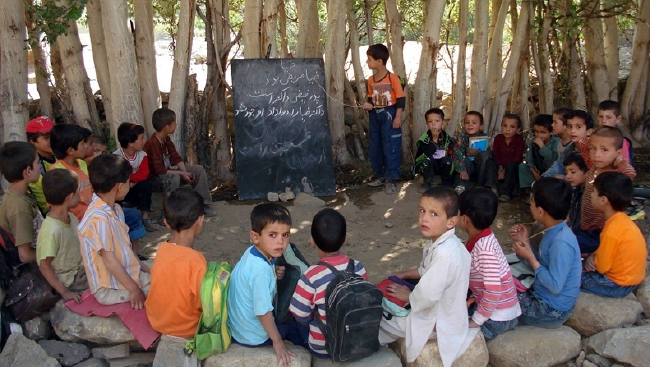They are subjected to extreme poverty, violence, health and poor education. Half the country’s estimated 30 million populations are below 15. Over a quarter of Afghan children die before their fifth birthday mostly from preventable diseases such as pneumonia and diarrhea. Afghanistan has some of the worst child malnourishment, stunting, underweight and vitamin deficiency figures in the world. According to the World Food Program, 39% of children under the age of five are underweight. 78% of Afghan children lack access to safe water. Only 6% of children are registered at birth, leaving the vast majority without legal identity and protection.
According some findigs, 1 in 8 Afghan women die in childbirth. Girls are sometimes forced to marry at a very young age and they are most at risk from complication during pregnancy and labour. Many women do not get the help they need because of few health facilities and lack of female health workers (in many areas only women are allowed to treat women, and few women have the opportunity or permission to get trained). Poor roads and lack of transport in rural areas can also make it difficult for women to access help. Only 24% of births are attended by a professional health worker.
People in Afghanistan are using opium to block pain; the pain of hunger, sickness, physical and mental trauma. There are more than one million addicts in this nation of about 30 million people, including 60,000 children under age 15, and about 13 percent are women and 7 percent are children, Afghan government officials say. Most of the women are opium addicts desperate to blunt the trauma of endless war. Many are illiterate mothers with unemployed husbands. Most have a little in the way of job skills, and some became addicts while picking opium poppies to earn a living and support their families…
Although access to education has improved significantly since the time of the Taliban, but still, poor facilities and threats posed by insurgents. Even so, over two-thirds of school-age children attend school. Girls, banned from school under the Taliban regime, are gradually returning to the classroom, but 70 percent are still not enrolled. The majority of girls still do not attend primary school. Only 11% of secondary-school-age girls are enrolled in grades 7-9 and 4% enroll in grades 10-12. Adult literacy rates remain low, at 43 percent for men and 14 percent for women.
Physical and mental Security is the most destructive and growing factors to make them leave schools and country for the purpose of reaching better abode. Educations target such as damaging or destruction of , poisoning, grenades, mines and rockets; threats to teachers and officials are common practice; students, teachers and other educational staffs have been killed and there has been looting. Hence, Thousands of girls and boys are leaving education and country due to stable security concerns and unknown future.
Children in Afghanistan work in all manner of jobs. They work as , shop assistants, as blacksmiths, carpenters, tailors, domestics, auto mechanics, carpet weavers, and in brick factories. Some of them are as young as 5 or 6 years old. In the cities, children collect paper and scrap metal, shine shoes, and beg. In rural areas, many children work in agriculture. Because of low family incomes, parents encourage their children to beg or work. Years of conflict have left many families parentless and with child-headed households.
In first years of Mr. Karzai government, there was a major flow of refugees returning to their home country but the flow has gradually decreased as a consequence of increasing social and political challenges. In 2015 with sixty-eight thousand refugees Afghanistan got the third place in the world! Most of these asylum seekers are young teenagers making the difficult and dangerous journey to Europe, unaccompanied by adults. These children are very susceptible and often encounter dreadful conditions in the way of illegal human trafficking and after they reach the destinations.
Thus, it is reported that Children from Afghanistan are trafficked they are subjected to forced labor, child soldiers, forced begging, commercial sexual exploitation, or debt bondage.
Home » Opinion » A Quick Look At History of Tomorrow
A Quick Look At History of Tomorrow
| Mohammad Zahir Akbari

